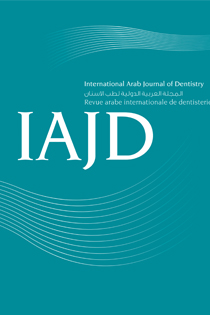Abstract
Eighty endodontically treated premolars were prepared and divided into four groups according to the amount of tooth loss: group 1) OD cavity; group 2) MOD cavity; group 3) only buccal wall was left; group 4) decapitated teeth. The prepared crowns were sub-divided into two subgroups according to the type of restoration: subgroup A) glass fiber post and core and subgroup B) auto polymerizing composite core. Metal copings were constructed and cemented for all groups. Fracture resistance of the entire samples was measured using universal testing machine. The findings indicated a statistically significant difference between the groups. The mean load required to fracture the Nayyar’s core was higher than the glass fiber post and core (p< 0.005). It was concluded that Nayyar’s core increased the fracture resistance of the teeth more than the fiber post. Nayyar’s core could be recommended as a substitute for fiber post in structurally compromised premolars.

